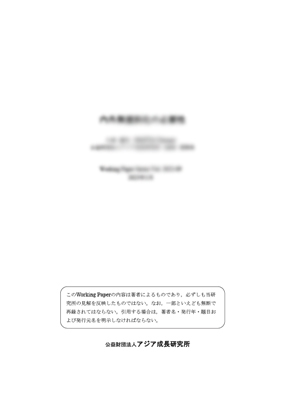Re-Examining the Convergence of the World Economy: Markov Chain Model with Population Weighting

| Author | Alvaro Domínguez, Hiroshi Sakamoto |
|---|---|
| Date of Publication | 2022. 2 |
| No. | 2022-02 |
| Download | 506KB |
Contents Introduction
We study the convergence hypothesis of economic growth relying on recent data. To fix the population size of each country for rank changes, we re-estimate the transition probability matrix by applying a population weight to changes in the income rank of each country. We then find that with no population weighting, the world economy can be divided into two peaks as before. Nevertheless, the population-weighted probability model yields more optimistic results: We divide the world economy into several regions, estimate similar probability models, and calculate the convergence distribution. We then divide the world into the optimistic and pessimistic region. The optimistic region, with high income, is composed of East Asia and Europe; The pessimistic region, with low income, is composed of Sub-Saharan Africa. These two extremes cause the observed twin peaks. The transition information of China and India has a significant impact when considering population weighting. These two countries show rapid economic growth, which produces optimistic results in our population-weighted model.
